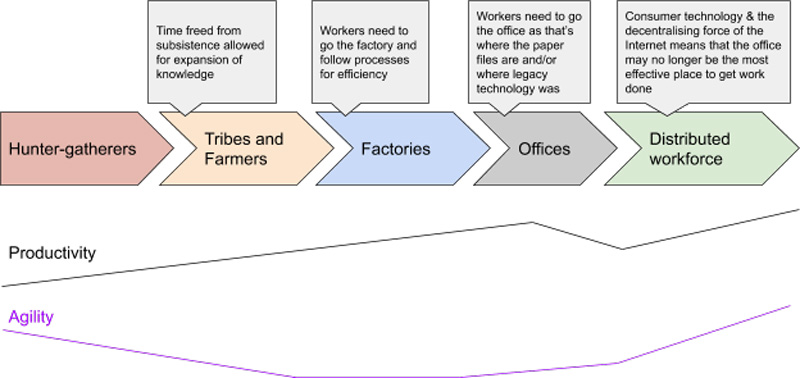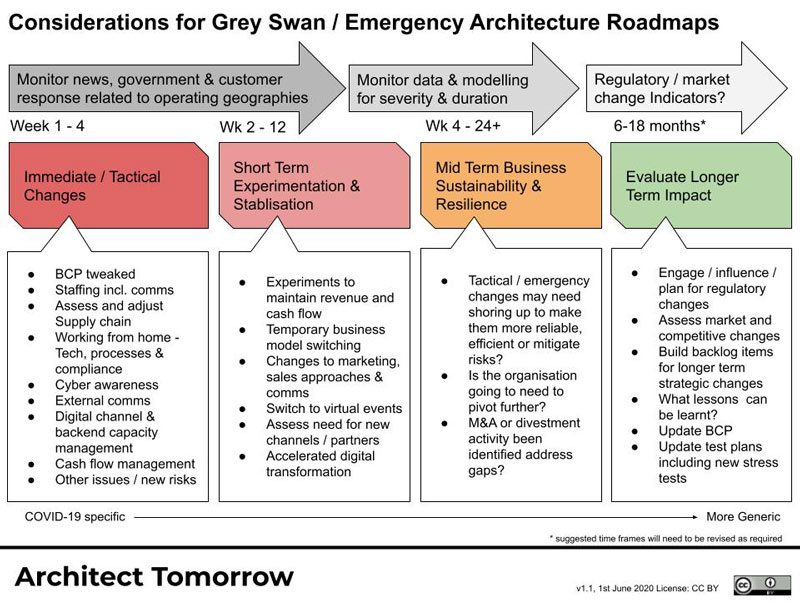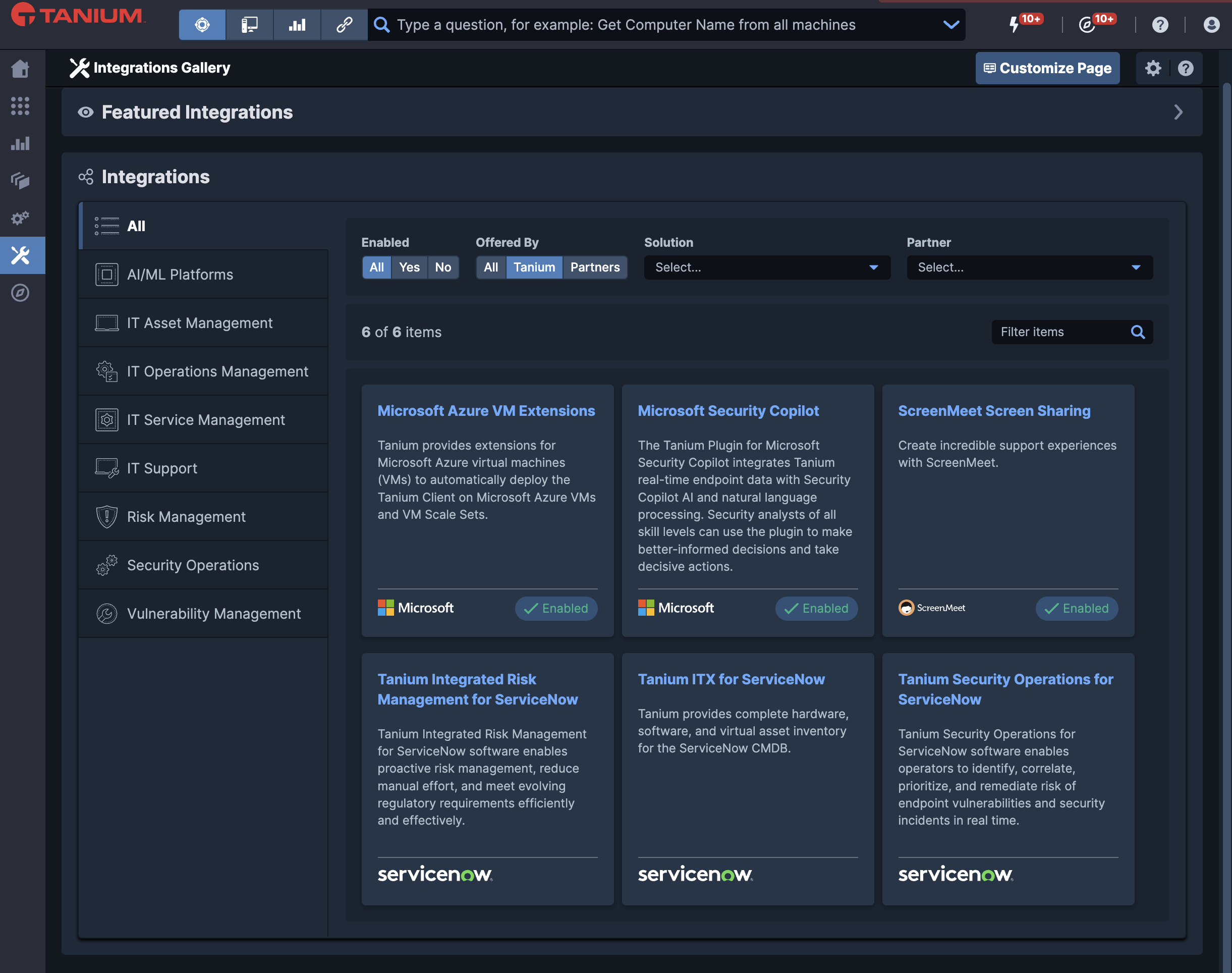The Evolution of Business as Usual
“We’ve seen 2 years worth of tech adoption in 2 weeks.”
“Why didn’t we realise we could work like this before?”
“This has been a real wake up call – we were still working like the internet didn’t exist until now.”
These are just some of the things I’ve heard and read over the last few weeks about how organisations have used this difficult, challenging and personally upsetting time as a chance to look for positives – how they can change the way they live and work for the better. Of course some “normal” working patterns will start to reappear as the crisis passes, but consumer and employee behaviour is likely to be different in the longer term (once the Pandora’s box of tech has been opened it generally isn’t simply shut).
Being prepared to thrive (and not just survive) in the era of the distributed workforce is vital. Having to move fast and compromise your technology management and compliance in order to continue to operate isn’t a sustainable solution. The good news is that there are smart ways to stay on top of the dynamic and continuously changing business environment.
The Physical Workplace Evolution
The shift to a more distributed workforce isn’t new. Many organisations have adopted a remote working culture. Some have then even reversed initiatives to work from home to foster greater in-person collaboration. However it is undeniable the pandemic has forced an acceleration of technology adoption, supporting not just new ways of working but also socialising with family and friends.
Dave Coplin has been saying for many years that the way we are working in offices is stuck in past eras and needs to be reimagined. Until recently, we were still working in offices like they were factories in the days of the industrial revolution, and the open office concept to foster collaboration is actually damaging to productivity.

As we have standardised and centralised our efforts, we have decreased our agility and ability to change (it takes time to re-tool a factory, re-organise an office or migrate from one datacenter to another).
Think of a small boat – it is far more agile, but less efficient at carrying cargo than a cargo ship. Much like computing models are shifting to smaller units of code through cloud hosted microservices, the move to a distributed workforce model for people should make organisations more agile, whilst also boosting productivity and allowing workers to use the environment that is most appropriate for the task at hand. Of course the distributed model will work best once we are out of lockdown and teams can also work together in person when required. The sudden switch to the distributed workforce model presents challenges and risks that need to be dealt with – more on that later on.
The Work Environment Evolution
“The cloud showed that your tech doesn’t need to live in the office, COVID-19 has made knowledge workers and their managers realize they don’t need to be there either.“
It’s not just where we work that has changed; what we do has changed as well. We’ve moved from factory production lines, physical paper-based processes and posting things in the mail, to typewriters, faxing, mainframe computers and then desktop computers. Yet many of the well understood concepts from the past have stuck with us – just look at the icon for email, saving a file or the layout of your keyboard for signs of the past.
Local area networks brought a revolution in knowledge sharing and communication – but they still required you to go into the office to use them. The dawn of the affordable laptop and smartphone, along with internet-based cloud services were real game changers. Yet the implications and art-of-the-possible of these game changers has been out of reach for many organisations who still relied on an office-centric approach to work (or couldn’t afford the investment in the required digital transformation). Regulators have also struggled to keep up with the implications of digital transformation which has been holding some industries back.
The Technology Evolution
Closing the agility gap
Nowadays the workforce demands the same convenience and user experience in the office that they have at home, with their personal devices and consumer technology services. But this is a challenge for many organisations with a complex legacy technology estate that is still on a journey to cloud and digital transformation. Whilst in theory Bring Your Own Device (BYOD) initiatives can fix part of this problem, they also introduce new risks. BYOD on its own won’t solve legacy backend technology that assumes a corporate device is accessing it. Today, that challenge has become a potential existential threat – if you can’t adapt the way you operate and keep up with the latest technological advancements, then you won’t be able to service your customers, manage your supply chain and stay compliant with regulations. The organisation has to overcome this gap in agility without creating significant compromises in compliance, security or manageability.
Closing the visibility gap
With these changes in physical workplaces and work environments, digital, technology and security teams need to use data to understand where tech is, what state it is in and if it is up-to-date and secure. In the era of the distributed workforce this is key – yet many organisations are still using paper era or perhaps spreadsheet-based approaches to manage this challenge. In the world of the distributed workforce you can no longer simply walk around your offices with a clipboard checking each device has up-to-date anti-virus. Neither can you assume everything is secure behind the on premise “castle” firewalls. Smart technology has to close this gap in visibility. The technology you use needs to give a joined up view of the technology estate across a diverse set of end user and backend server endpoints. Many organisations who have invested in technology solutions have a myriad of different niche, point solutions that don’t integrate and therefore add complexity rather than providing a single point of truth about enterprise technology.
Closing the resilience gap
And of course technology can go even further than visibility and providing a basic inventory; it can map out dependencies and provide ways to manage and control technology. This capability is crucial as workforce mobility has increased. Keeping on top of the status of assets is a core foundation but organisations also need to be able to dynamically respond to challenges. Understanding interdependencies and relationships between assets and cross-functional teams is key to ensuring business continuity. Technology has to close this gap in resilience, particularly in work environments that are distributed and becoming more and more digital.
Closing the accountability gap
New forms of communication and collaboration to ensure cross-functional teams work together mean that teams have to understand their own responsibilities at all times in all scenarios. Everyone needs to understand how they should operate in the distributed model, and operations and security teams will need new playbooks, tools and reports to help them make data-driven corrections and understand how their decisions and actions impact other teams and the organization as a whole. A combination of training, culture and technology has to close this gap in accountability.
The Evolution of “Business-as-usual” and Preparing for Waves of Future Change
The world is now so complex and changing so fast that operations, risk and security teams need to embrace digital and data-driven approaches to managing their workload. The sales team is no longer expected to take all orders manually by phone or in person – so the technology teams shouldn’t be expected to manage technology without leveraging technology either!
Rapid changes like those we have seen for COVID-19 with pre-existing gaps and the pressure to make changes at speed has often meant significant compromises have had to be made. Yet it doesn’t need to be this way – Tanium’s modern, distributed and insight-driven approach enables customers to leverage the platform that offers visibility into and manageability of their changing technology at scale, addressing challenges at multiple stages of crisis and rapidly moving through three levels of operational maturity with speed and confidence:
- Phases 1 & 2 – Develop Resilience: immediate steps to respond to the new operational environment.
- Phase 3 – Recover Operations: midterm steps to achieve and maintain business continuity.
- Phase 4 – Plan for the return to normality: the long-term steps to prepare for operations after the pandemic passes.

Some examples of how we have helped our customers include:
- Providing visibility and control of end user endpoints regardless of whether they are on the VPN or not
- Fixing broken VPN clients – getting endpoints back on to the VPN using Tanium control (in many cases there might not have been another way of managing those endpoints other than using Tanium)
- Offloading patching and systems management traffic off of the VPN to free it up for business critical applications
- Creating an inventory of webcams across hundreds of thousands of endpoints to inform the business on the feasibility of using video-based customer interaction.
Whilst there is a lot of uncertainty about the future, one thing that is for certain is that the world will continue to be dynamic and changeable. Whether it’s a pandemic, a climate-related event or sudden regulatory changes, organisations need to be ready to adapt and continue their digital transformations. Tanium customers have a key partner to close the gaps in how the business needs to operate and the realities of its technology landscape.
Register for our IDC Webinar to hear from Michael Suby with IDC, and Oliver Cronk at Tanium as they discuss the foundation needed to close IT gaps, mitigate risk and support business growth.
Interested in seeing Tanium in action? Schedule a one-to-one demo or talk to our Tanium experts at our upcoming events.




